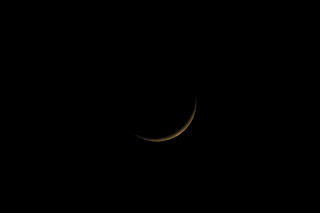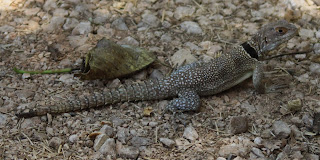Monday 8th November 2010
This post will have to be quick as once again we are out in the wilds of Madagascar but this time with tentative Internet connection. Our day started with the high speed drive back to Mahajunga to catch the earlier flight as described below. This had an up side in getting us, via a 3 hour drive, to Perinet and the associate Rain Forest where there has been little rain over the last month and the temperature much reduced from previous days. The photographs below are from yesterday, but we have had a most successful back-end of the day here adding several species of bird and mammals which with luck I'll get around to tomorrow.
Firstly, a welcome to all our new readers in Madagascar, Jordan and Egypt which brings the countries total to 105. Also I'd like to welcome the Australian Capital Territory and Queensland contingent, Wally, Susan, Ruth et al, relatives of our Aus travelling companions, and thank you all for your 'comments'.
It was yet again a game of catch up for me on our last day at Ankarafantsika, with the outstanding being Van Dam's Vanga and Madagascar Harrier Hawk. In addition there was also the small matter of Schlegal's Asity which we all dipped yesterday so it will be of no surprise to learn that our first port of call was the Asity forest. Immediately we found more birds than the previous day and it wasn't long before a couple of us saw the Van Dam's and eventually our local guide picked up the call of the Asity. Difficult in canopy conditions, but a bright male and a much more obliging female finally put in a show, the latter allowing some distant images. Breakfast was a rushed affair as I needed to get to the dam about a mile down the road but my first visit was again unsuccessful for the Hawk. Daily the heat had been prohibitive here by noon, but needs must and I set out again and this time found a fine male both in flight and perched.
This post will have to be quick as once again we are out in the wilds of Madagascar but this time with tentative Internet connection. Our day started with the high speed drive back to Mahajunga to catch the earlier flight as described below. This had an up side in getting us, via a 3 hour drive, to Perinet and the associate Rain Forest where there has been little rain over the last month and the temperature much reduced from previous days. The photographs below are from yesterday, but we have had a most successful back-end of the day here adding several species of bird and mammals which with luck I'll get around to tomorrow.
Firstly, a welcome to all our new readers in Madagascar, Jordan and Egypt which brings the countries total to 105. Also I'd like to welcome the Australian Capital Territory and Queensland contingent, Wally, Susan, Ruth et al, relatives of our Aus travelling companions, and thank you all for your 'comments'.
It was yet again a game of catch up for me on our last day at Ankarafantsika, with the outstanding being Van Dam's Vanga and Madagascar Harrier Hawk. In addition there was also the small matter of Schlegal's Asity which we all dipped yesterday so it will be of no surprise to learn that our first port of call was the Asity forest. Immediately we found more birds than the previous day and it wasn't long before a couple of us saw the Van Dam's and eventually our local guide picked up the call of the Asity. Difficult in canopy conditions, but a bright male and a much more obliging female finally put in a show, the latter allowing some distant images. Breakfast was a rushed affair as I needed to get to the dam about a mile down the road but my first visit was again unsuccessful for the Hawk. Daily the heat had been prohibitive here by noon, but needs must and I set out again and this time found a fine male both in flight and perched.
 Tomb Bat
Tomb Bat Madagascar Harrier Hawk
Madagascar Harrier Hawk Long-billed Greenbul
Long-billed Greenbul Lesser Vasa Parrot
Lesser Vasa Parrot Ditto
Ditto Grey-headed Lovebird (female - green head).
Grey-headed Lovebird (female - green head). Common Brown Lemur
Common Brown Lemur Common Brown Lemur
Common Brown Lemur These fruits are the staple diet of the Common Brown Lemur
These fruits are the staple diet of the Common Brown Lemur Butterfly
Butterfly Schlegal's Asite, probably the most difficult of all the birds we have tried to locate here,
Schlegal's Asite, probably the most difficult of all the birds we have tried to locate here, it is a canopy dweller and secretive.
it is a canopy dweller and secretive. Madagascar Hoopoe with crest raised.
Madagascar Hoopoe with crest raised. Coquerel's Sifaka
Coquerel's Sifaka in jumping
in jumping mode.
mode. Part of the dry forest
Part of the dry forest Shore-side tree
Shore-side tree Rhinoceros Chameleon
Rhinoceros Chameleon Ditto (detail)
Ditto (detail) Leaf Bug Larva
Leaf Bug LarvaThe programme had allowed for a little birding on the 4 hour drive back to Mahajanga but that was before Madagascar Air stepped in to spoil things with yet another flight schedule change. This time bringing our return to Tana forward an hour it would be a fast drive back to catch it. We did so and again stayed in the splendid Orchid Hotel not far from the airport, allowing for Internet access and these updates. We will be on our way again later today but more of that later. For now an update on the various lists:-
Trip Bird Total - 140
World Lifers - 100
Endemics - 96
Trip Bird Total - 140
World Lifers - 100
Endemics - 96





















